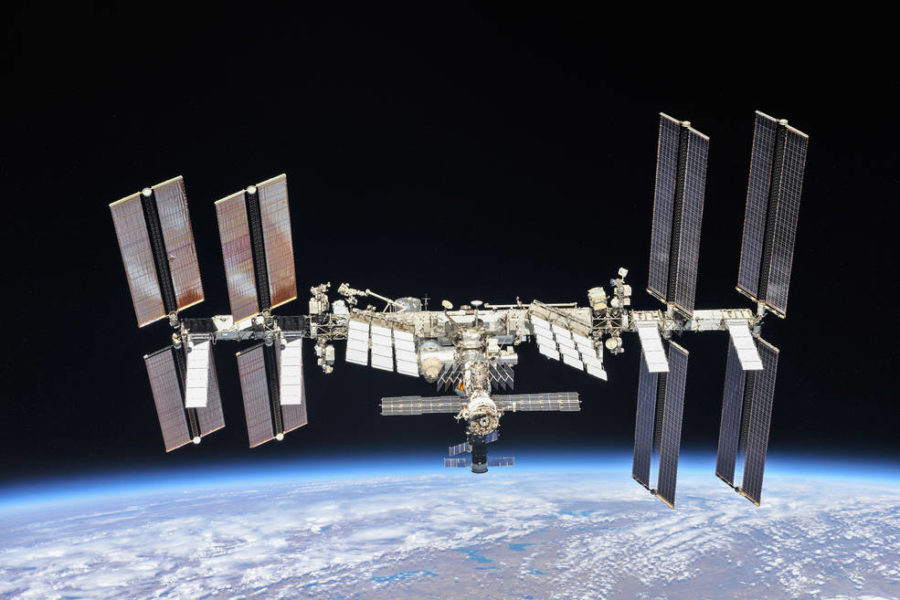The U.S. and Russia need to work together on a plan to de-orbit the International Space Station, a plan that a NASA advisory board said is needed both in case of an emergency—a growing likelihood—and to prepare for the station’s retirement.
Meanwhile NASA, together with SpaceX, should address a backup launch pad for crew and cargo missions to the ISS in case the company damages its existing launch pad when it begins launching its new Starship rockets from there.
Risk to the ISS itself—not to mention the risk it poses to other objects in space and to people there and on the ground—only grows as more satellites enter low Earth orbit, said Sandra H. “Sandy” Magnus, a member of NASA’s Aerospace Safety Advisory Panel, or ASAP, at the group’s October meeting.
A former stealth engineer for McDonnell Douglas Aircraft before becoming an astronaut, Magnus also worked as the Defense Department’s chief engineer for advanced capabilities as well as deputy director of engineering in the Office of the Undersecretary of Defense for Research and Engineering.
The panel first recommended in 2012 that NASA estimate the risk to people on the ground if the ISS re-entered Earth’s atmosphere uncontrolled; and said the agency should hammer out a timeline for safe de-orbiting.
“Our rationale was, of course, that an unexpected emergency event could precipitate the need to de-orbit the ISS at any time, and timely development of the plan on how to respond to such a situation before it occurs will allow an optimum response and maximize the safety of the public in that situation,” Magnus said.
After “conceptual agreement” later emerged on an approach, the board was satisfied, but it’s now circling back: “Subsequent detailed discussion amongst the ISS partners have identified technical and operational issues, which needs further addressing,” Magnus said.
Already, NASA and the Russian Space Agency are discussing how to make the plan for a controlled re-entry “more robust,” Magnus said. “And the panel would like to reiterate its concern first stated … in 2012 about the lack of a well defined, fully funded, controlled re-entry and de-orbit plan for the ISS that is available on a timeline that supports the planned ISS retirement,” anywhere from 2024 to 2030.
NASA’s existing plan, outlined in January 2022, assumes that controlled de-orbiting maneuvers will take place in the second half of 2030 with the assistance of three of Russia’s Progress cargo vehicles—the space station’s own propulsion together with that if its normal rotation of visiting vehicles wouldn’t be enough.
But in case of an emergency, NASA needs to prepare, the board said.
“The risk to public safety and space sustainability is increasing every year as the orbital altitude in and around the ISS continues to become more densely populated by satellites, increasing the likelihood that an unplanned emergency ISS de-orbit would also impact other resident space objects,” Magnus said.
The panel’s new recommendation: “NASA should define an executable and appropriately budgeted de-orbit plan that includes implementation on a timeline to deliver a controlled reentry capability to the ISS as soon as practicable, to be put in place for the need of a controlled de-orbit in the event of an emergency, as well as in place before the retirement of the ISS, to ensure that the station is able to be de-orbited safely,” Magnus said.
In part because Boeing’s crew capsule, the Crew Space Transportation-100 Starliner, hasn’t yet entered service, NASA’s Commercial Crew Program doesn’t have the intended redundancy available to fly astronauts to the ISS, according to the panel’s report made Oct. 27. Contracting for five more future SpaceX Crew Dragon missions brought the coming roster to eight crew flights, which should last into 2027. Meanwhile, NASA and Boeing postponed the first crewed test flight of a Starliner capsule two months, to no earlier than April 2023, to address anomalies from an uncrewed test flight.
Therefore, according to the panel, as the only provider able to transport crew, SpaceX should rapidly complete tasks surrounding the certification of a backup launch pad—Space Launch Complex 40 at Cape Canaveral Space Force Station, Fla.—before commencing launches of its super-heavy-lift Starship rocket at Kennedy Space Center’s Launch Complex 39. The Starship launches could start as soon as this year, so NASA and SpaceX need a backup in case of problems “related to a launch failure,” according to the panel.
